In the words of playwright Anton Chekhov, “Life on earth is inconceivable without trees.” Yet how often do we stop to marvel at these living wonders? Trees occupy the realm of superlatives—biggest, tallest, oldest—stretching the boundaries of what we imagine possible in a living thing. Consider Pando, the clonal colony of aspen in Utah’s Fishlake National Forest, whose vast root system emerged at the end of the last Ice Age. A single organism, it ranks among the world’s most ancient and largest living things, occupying 106 acres and weighing 13 million pounds.
Trees don’t just inspire awe. They make our world more livable, creating pockets of serenity in a chaotic modern world. “The atmosphere up in a tree is totally different than down next to the asphalt,” says Charles Perington, an arborist at the University of Utah’s Red Butte Garden & Arboretum and a competitive tree climber. The science backs it up: these leafy giants filter pollution and cool the air, and their soothing hues and aromas measurably affect body and mind. Inhaling the scent of pine, for example, can lower cortisol and boost the immune system.
At the U, trees aren’t merely landscaping—they’re a living museum, born from one man’s simple philosophy: “Let’s plant it and see if it grows.” That man was Walter P. Cottam, the university’s Botany Department chair, whose fascination with trees led him to plant diverse species in what’s now known as Cottam’s Gulch. His efforts spread across campus, transforming it into what the Utah legislature would designate the state’s official arboretum in 1961. In 1985, the garden opened to expand the arboretum and establish permanent display gardens. Together, campus and Red Butte host 11,600 trees spanning more than 300 species.
“Every tree is unique,” says Suzie Middleton, a certified arborist who has inventoried the entire campus collection. Her favorite, a Japanese zelkova planted by Cottam himself, is the largest specimen of its kind in Utah and one of 13 state champions at the U. Middleton oversees the University of Utah tree tour, which allows visitors to explore the collection by scanning QR codes on placards attached to about 100 trees.
Under the canopy of Cottam’s legacy, it’s impossible not to pause and marvel. Read on to discover a few of the species you can visit in this remarkable resource.
SPECIES SPOTLIGHT
Bur-Gambel Oak
QUERCUS GAMBELII X MACROCARPA
“If I were going to show people one tree, this would be it,” says Red Butte Garden & Arboretum’s Charles Perington. In his eyes, it’s the perfect backyard tree for Salt Lake City, marrying the native Gambel oak’s climate suitability with the Midwestern bur oak’s height and shade. With its long lifespan, “four generations of a family could all grow up underneath the same tree,” Perington notes. The specimen is a result of Walter Cottam’s world-renowned work crossing different oak species. Cottam’s Grove at the garden is filled with his hybrid oaks, whose acorns are still sought after by botanical gardens and researchers worldwide.
DID YOU KNOW?
| ▼ Hybrid of Midwestern bur oak and southern Rockies Gambel oak |
▼ Produces heavy amounts of acorns at a young age |
▼ Acorns are low in tannin and make good flour |
COORDINATES 40.76506, -111.82803

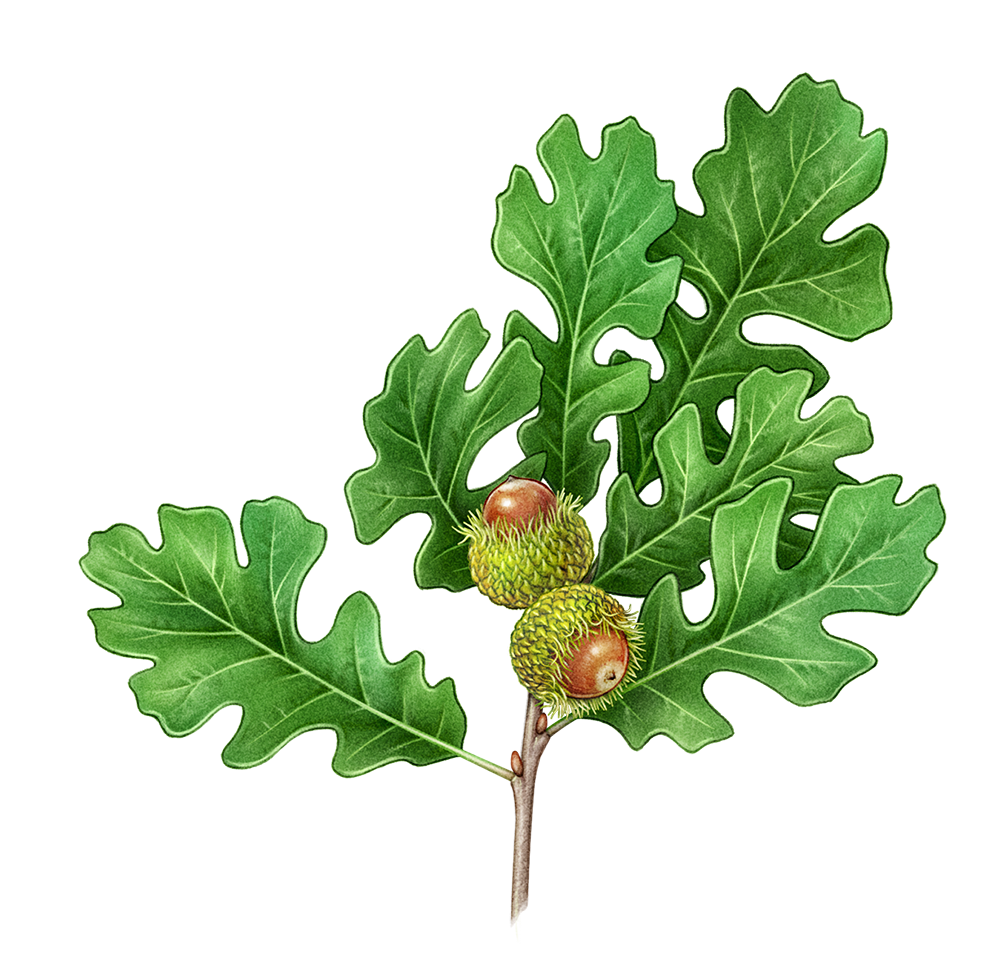
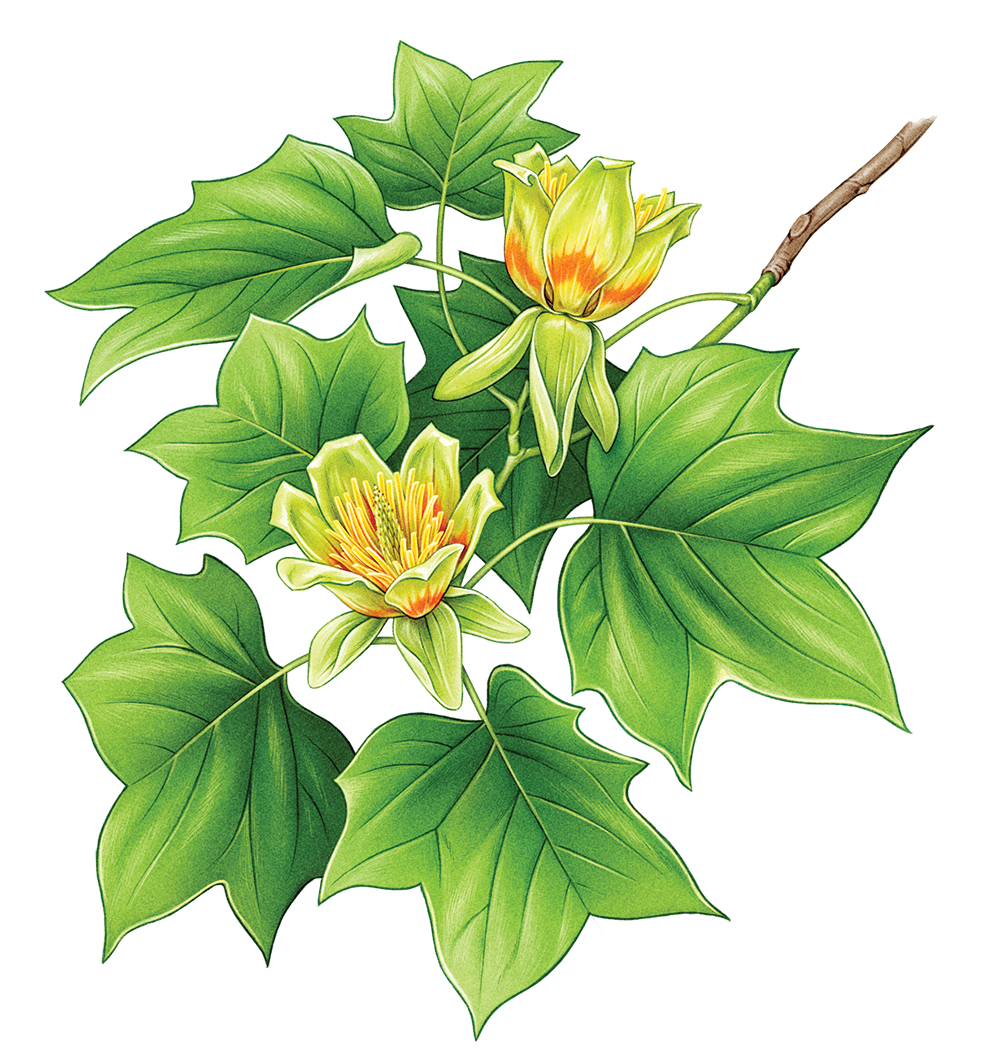
SPECIES SPOTLIGHT
Tulip Tree
LIRIODENDRON TULIPIFERA
This eastern North American native is named for its stunning cup-shaped flowers that resemble prize-winning hothouse cultivars. In shades of luminous green to buttery yellow, with flame-like tangerine strokes at the base, the elegant blooms perch on the branches like pretty little teacups on saucers.
DID YOU KNOW?
| ▼ Native throughout eastern North American temperate forests |
▼ Used by Cherokee for dugout canoes |
▼ Popular wood species for organs because it makes a tight seal against pipes and valves |
COORDINATES 40.766474, -111.849825; 40.76096, -111.84356; 40.767432, -111.824794
SPECIES SPOTLIGHT
Southern Magnolia
MAGNOLIA GRANDIFLORA
Native to more temperate climes, this broadleaf evergreen has no business thriving in northern Utah. But the campus specimen is doing “surprisingly well,” says Suzie Middleton, even after being transplanted from its original site outside the now-demolished Orson Spencer Hall. The tree’s creamy white blooms—which may grow as big as a dinner plate—are among the largest of any native North American tree.
DID YOU KNOW?
| ▼ Native to the southeastern United States |
▼ Blooms smell like citronella |
▼ Waxy coating helps leaves resist salt and pollution damage |
COORDINATES 40.764341, -111.848104
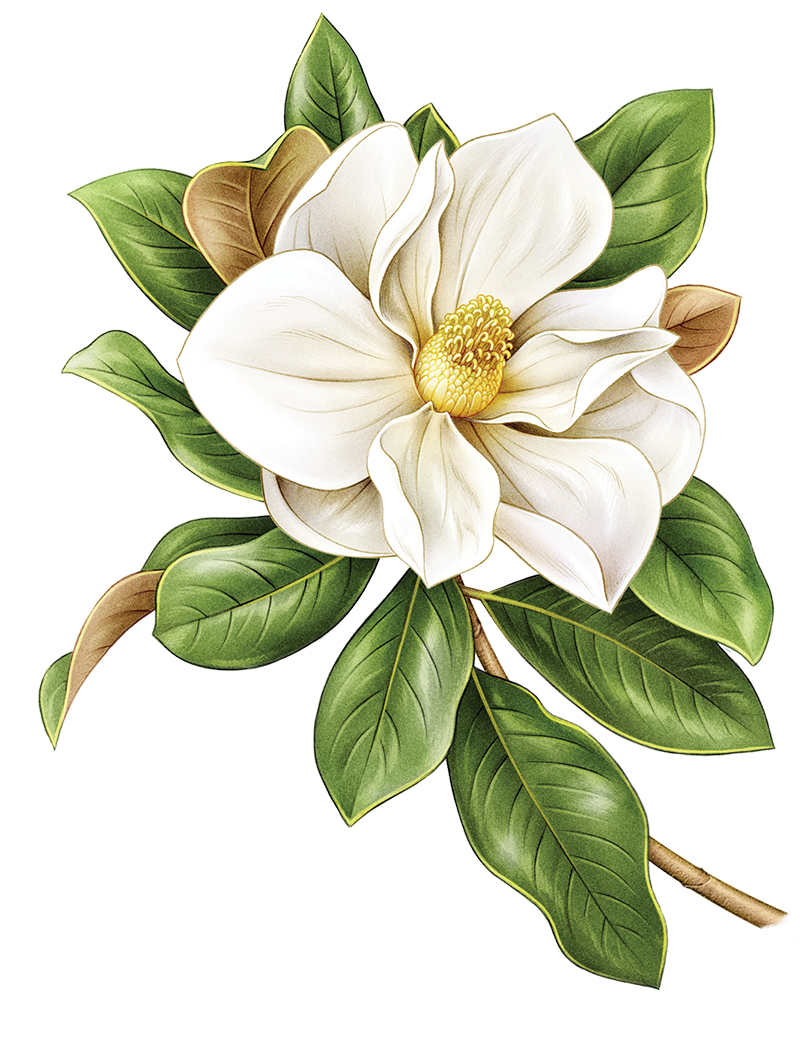
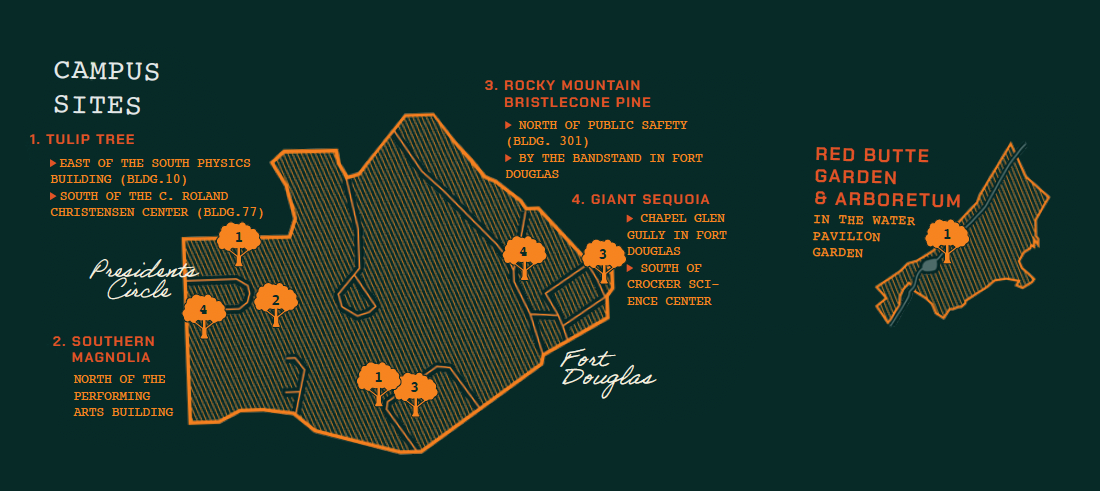
SPECIES SPOTLIGHT
Rocky Mountain Bristlecone Pine
PINUS ARISTATA
For withstanding the extreme conditions of its arid montane habitat, the Rocky Mountain bristlecone is rewarded with a lifespan of two or three millennia. Its cousin, the Great Basin bristlecone pine, lives even longer. The world’s oldest tree is a 4,853-year-old specimen named Methuselah, whose exact California location is kept secret to protect it from the unfortunate fate of the oldest tree on record—a nearly 5,000-year-old Great Basin National Park bristlecone felled in 1964.
DID YOU KNOW?
| ▼ Native to Colorado, New Mexico, and Arizona |
▼ Habitat: arid elevations from 7,500-12,000 ft. |
▼ Ice and high winds shape the trunks into surreal, sculptural forms |
▼ Dense, resinous wood resists pests |
COORDINATES. 40.760785, -111.841563; 40.76511, -111.83286
SPECIES SPOTLIGHT
Giant Sequoia
SEQUOIADENDRON GIGANTEUM
Sequoia groves—which naturalist John Muir called “God’s first temples”—inspire such awe that entire national parks arose to protect them. The most massive tree species on earth, these giants can reach heights of 300 feet and trunk diameters of up to 40 feet. The largest tree in the world, General Sherman in Sequoia National Park, stands 275 feet tall and more than 36 feet wide at its base, containing enough wood to build more than 120 average-sized homes.
DID YOU KNOW?
| ▼ Current range: western slopes of California’s Sierra Nevada |
▼ Grow 40 cubic feet of wood per year while maturing |
▼ 18-inch-thick bark protects trunk from significant fire damage |
▼ Genus can be traced to the Triassic Period 200 million years ago |
COORDINATES 40.76586, -111.83639; 40.76369, -111.85151
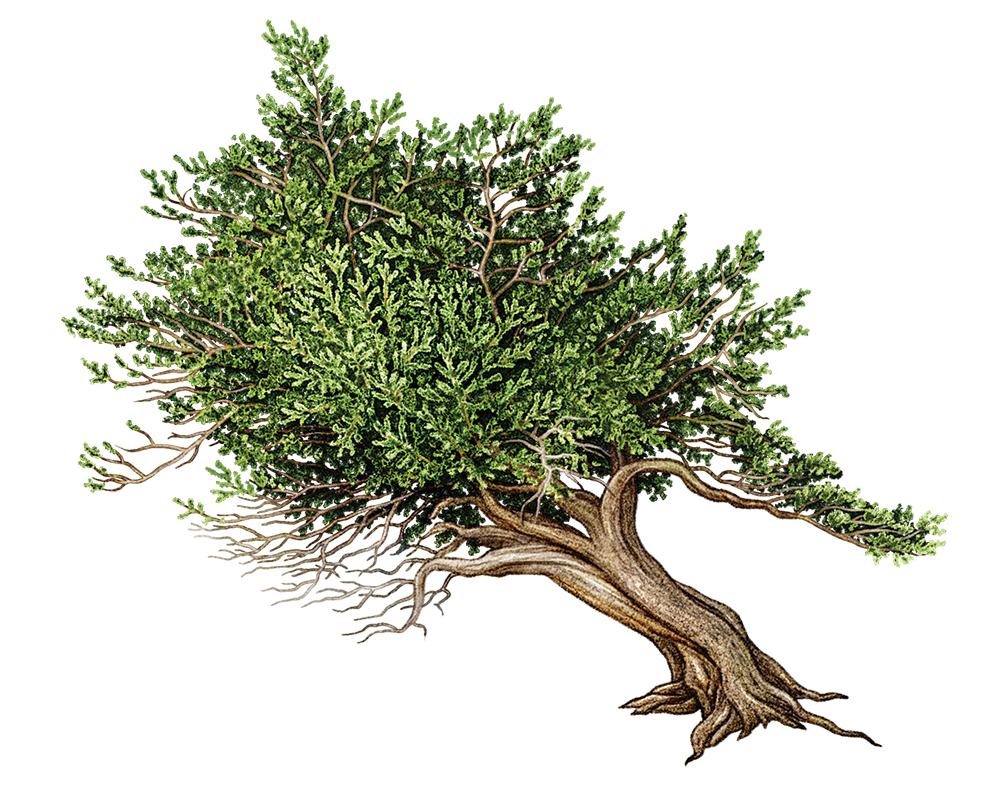
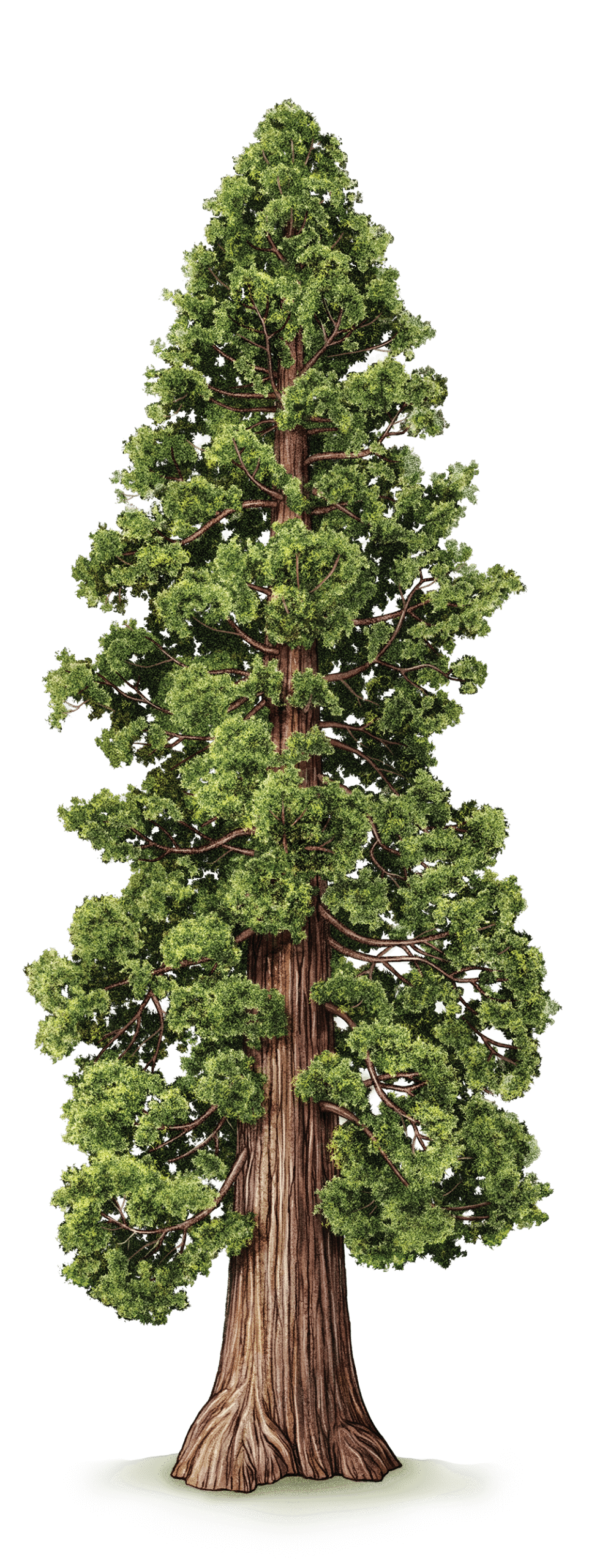

SPECIES SPOTLIGHT
Osage Orange
MACLURA POMIFERA
At first, this tree’s neon-green, wrinkly, softball-sized fruit seems its most distinctive feature. But its wood has almost mythical properties. Durable, flexible, rot-resistant, and dense, it burns so hot that it can reportedly melt woodstoves. Indigenous tribes as far east as the Ohio River Valley and as far west as the Rockies prized and traded for bows made from Osage orange wood. Plains settlers relied on the trees to establish their homesteads, weaving the tough, thorny branches into makeshift barbed-wire fences said to be “horse high, hog tight, and bull strong.”
DID YOU KNOW?
| ▼ Native to Arkansas, Oklahoma, and Texas |
▼ Named in part for the citrus scent of its fruit when ripe |
▼ One of the hottest-burning wood species |
▼ So prized among the peoples he encountered that Meriwether Lewis sent cuttings to Thomas Jefferson |
COORDINATES 40.766473, -111.835206
SPECIES SPOTLIGHT
Ginkgo
GINKGO BILOBA
One of Earth’s oldest tree species, this “living fossil” has changed little since it first appeared on the evolutionary timeline. Ginkgo biloba is the only surviving member of the order Ginkgoales, which predates the dinosaurs at more than 290 million years old. The ginkgo’s iconic fan-shaped leaves give the tree an almost sequined look and turn a show-stopping yellow come fall.
DID YOU KNOW?
| ▼ Native to China, Korea, and Japan |
▼ Can live up to 3,500 years |
▼ Grew in North America 15 million years ago |
▼ Produces chemicals that protect it from disease and drought |
▼ Used in traditional Chinese medicine for thousands of years |
COORDINATES 40.76457, -111.84904
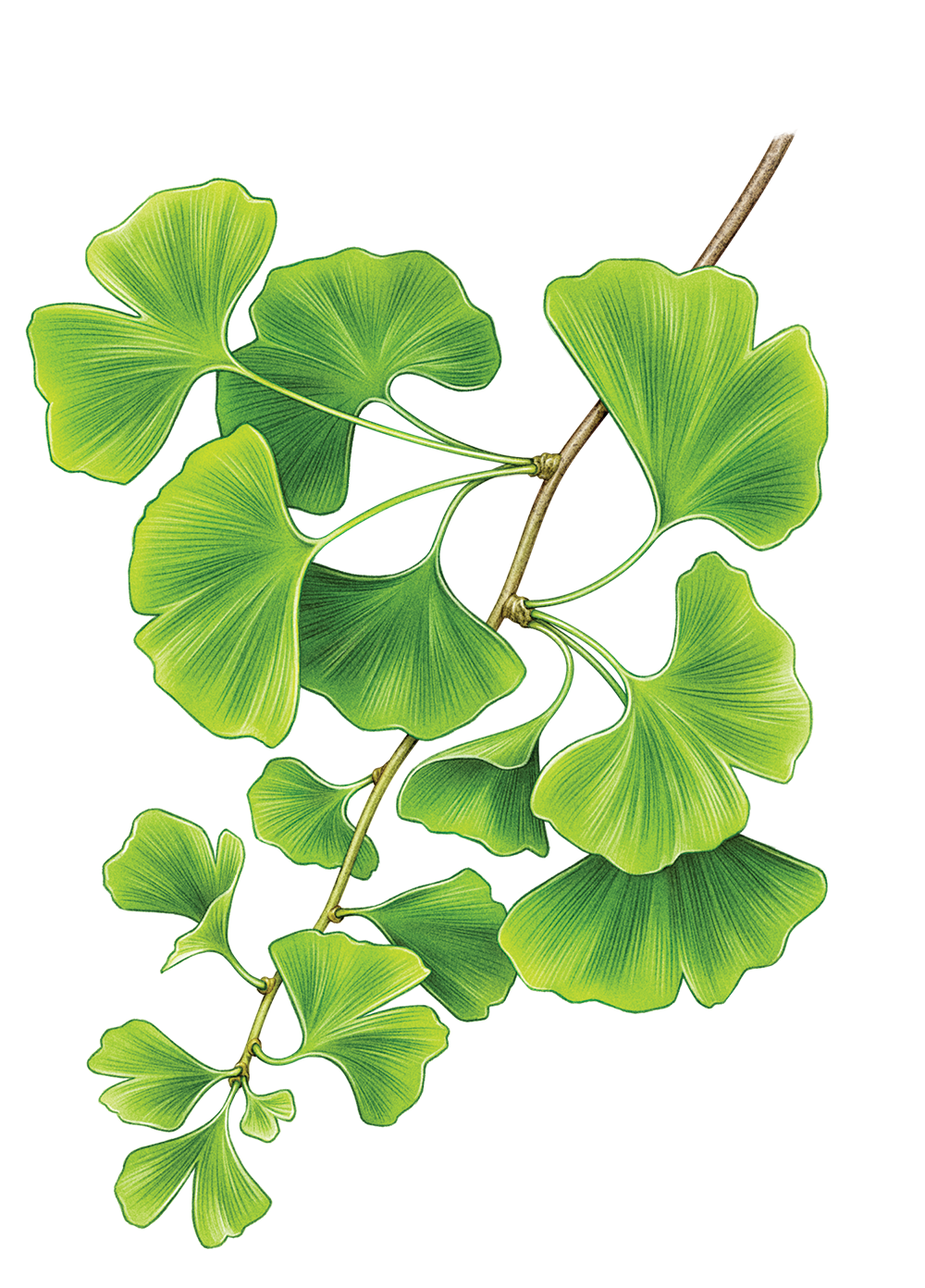
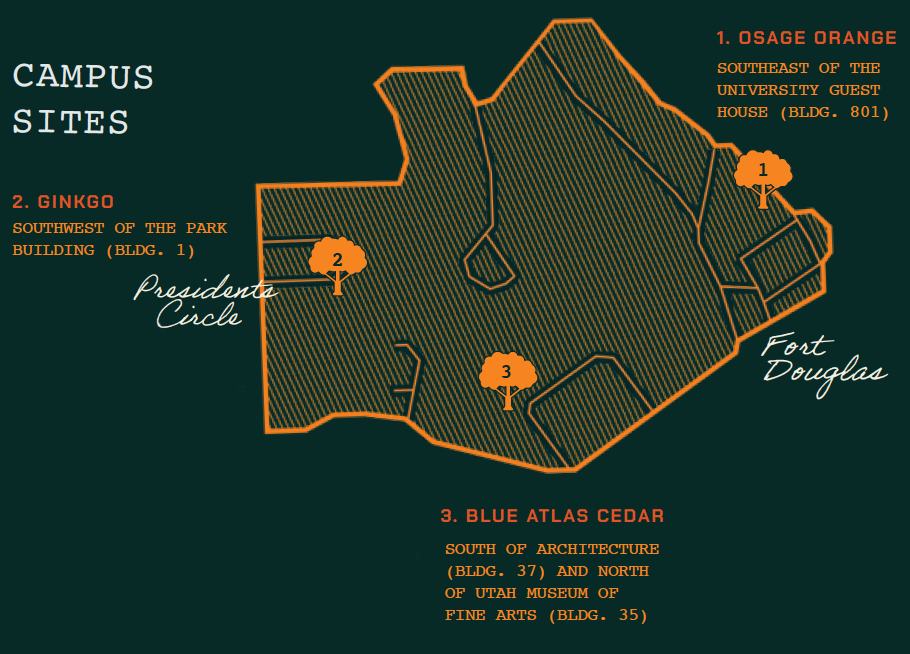


SPECIES SPOTLIGHT
Blue Atlas Cedar
CEDRUS ATLANTICA ‘GLAUCA’
Lacy and graceful, the blue Atlas cedar is a prized ornamental tree in gardens around the world. Clusters of short needles along outstretched branches create a textured, airy look, while the needles’ waxy coating—which helps them conserve water—casts an icy blue hue. One of only four true cedar species, it provides habitat for the endangered Barbary macaque in North Africa’s Atlas Mountains.
DID YOU KNOW?
| ▼ Native to the Atlas Mountains of Morocco and Algeria |
▼ Produces compounds that cool the surface of needles, preventing water loss |
▼ Bark produces an aromatic oil used in health and beauty products |
▼ Ancient Egyptians used oil for embalming |
▼ Moth-repellent wood was historically used to make chests and wardrobes |
COORDINATES 40.760749, -111.843923
Lisa Anderson is associate editor of Utah Magazine.



Thank you for this article. With so much attention being directed at Red Butte, I had almost forgotten about the lower campus arboretum. I was introduced to it in 1953 when I enrolled in the College of Pharmacy, then housed on the top floor of the old Girls Gymnasium. With so many changes that have taken place in the lower campus it’s nice to know the trees have been preserved.
I love trees! This was such a fun read! I plan to take some walks to find these beautiful specimens. Please make more content like this!
The cover to this magazine stopped me in my tracks. These illustrations are so beautiful! Thank you for giving a platform to all the amazing trees on campus.
A fantastic article with stunning illustrations! I would like to add a humble contribution to lists of awe-inspiring trees located at the University of Utah campus living museum.
The Tree of Hippocrates: A Living Legacy of Healing
While not towering in stature like some of its ancient counterparts, the “Tree of Hippocrates” located on the University of Utah Health Academic campus, adjacent to the Spencer S. Eccles Health Sciences Library, holds an immeasurable cultural and inspirational significance. This tree is a direct descendant of the legendary plane tree on the Greek island of Kos, beneath which Hippocrates, the “Father of Medicine,” is said to have taught his students over 2,400 years ago.
Planted as a symbol of the enduring legacy of medicine and ethical practice, the University of Utah’s Tree of Hippocrates serves as a constant reminder to past, present, and future health professionals of their noble calling. Its branches, though perhaps not reaching to the sky, stretch across centuries, connecting modern medical advancements to the ancient roots of compassionate care and scientific inquiry. It stands as a silent mentor, inspiring dedication, integrity, and a commitment to healing within the academic community. Its presence underscores the deep historical foundations upon which contemporary healthcare is built, making it a truly awe-inspiring “giant” in its own right.
A brief history of our very own ‘Tree of Hippocrates’ can be viewed https://library.med.utah.edu/publishing/exhibition/eccles-library-tree-of-hippocrates/
This was such a beautiful read. I love trees. This is the perfect tribute. Thank you!
Lisa and Irene, Thank-you for a great article. I too love trees and love knowing the amazing trees found at the University.
Loving on the trees! Thank you for this article, very informative, I had come across an Osage Orange tree years ago, and was intrigued; never knew what it was until today.
Thank you for this informative, beautifully-illustrated article on trees. I’m heartened to know about these preservation efforts on campus, and will definitely pay more attention when walking around now. I was sad to see all those trees cut down when OSH was demolished, but glad to know that at least one of them was replanted elsewhere on campus. Were any more of the trees around OSH saved?
Great question! We asked Suzie Middleton, and this was her response: “About 20 trees around OSH were transplanted since they were unique specimens. They included a white pine, columnar Wilson spruces, dwarf weeping spruces, contorted filbert, several Japanese maples, star magnolia, Bosnian pine, limber pine, weeping blue Atlas cedar, golden chain tree, tricolor beech, and multiple rose bushes from the rose garden.”